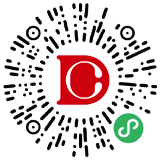
周四从瑞士航空飞行基地起飞的以太阳能为引擎的试验飞机是第一次试飞。
太阳能动力最终是以飞行者之梦“不落的飞行”为目的并且想要证明夜晚也可以驾驶,第一个乘热气球全球驾驶的第一个冒险家Bertrand Piccard说。
“21世纪最伟大的冒险不再是登上月球,因为这已经被实现了,现在就是把社会的耗能燃料从对化石燃料的依赖上转移出去”。“太阳能动力比航空冒险还要冒险,新能源将会给社会带来什么”
飞机是由太阳能电池板当表面的,这将比轿车重并且要承担着大型飞机A340的那种机翼的重量,并且已经完成了10项测试希望它一开始就就能够飞行7个月。
应用顶尖技术,四个以太阳能为燃料的10马力发动机已经逐渐把它推向更高海拔方向发展了,最后再飞行几小时。
An experimental aircraft, Solar Impulse, is set to take off from a Swiss airbase early Thursday on the first attempt to fly around the clock fuelled by nothing but the energy of the sun.
Solar Impulse is ultimately aiming for the aviator's dream of "perpetual flight" and to prove a point by flying through the night, said the venture's founder, the first balloonist to circumnavigate the globe, Bertrand Piccard.
"The great adventure of the 21st century is no longer to go to the moon, because that has already been done, it's about moving society bit by bit away from its dependence on fossil fuels," the Swiss adventurer claimed.
"Solar Impulse is a lot more than an aviation adventure, it's a demonstration of what this new technology can bring to society."
The single seater clad with solar panels, which weighs little more than a saloon car but bears the wingspan of an Airbus A340 airliner, has completed 10 test flights since it first hopped along a runway seven months ago.
Packed with cutting edge technology, the prototype's four sun-fuelled 10 horsepower electric motors have gently hauled it to high altitude, flying for hours on end.
Joint founder Andre Borschberg described a dawn flight on Tuesday as "totally cool" after a fright over the weekend when another test pilot felt vibrations as he stretched the plane to its limits.
The pioneering attempt is fraught. A 25-hour window of fine summer weather is needed from the moment the ultra lightweight plane takes off from Payerne airbase early on Thursday.
Former space shuttle astronaut Claude Nicollier said the most critical period would come overnight as daytime solar energy stored in batteries runs low and the team looks to the rising sun for a boost.
"We'll have very little energy and will have to make a decision on whether to continue or land," the flight test chief explained.
Another challenge will be keeping Borschberg alert for 24 hours.
"The plane demands a lot of attention, there's no autopilot. You can't snooze for a few minutes," Nicollier pointed out.
Nicollier and a retired NASA chief test pilot, Rogers Smith, will be among the multinational team guiding Borschberg gently to altitudes of up to 8,500 metres (27,900 feet) over Switzerland and eastern France at speeds of about 70 kilometres per hour (44 mph).
Eleven years ago Piccard felt that a mysterious "invisible hand" gave him and British teammate Brian Jones a lift just as their pioneering non-stop circumnavigation in the Orbiter balloon seemed doomed.
Today, little is being left to the supernatural as Solar Impulse tries to harness the forces of nature.
"As the person in charge of flight testing I try to introduce the techniques used in space flight, where safety is extremely important," said Nicollier.
Even Borschberg will be rigged up to sensors so that mission control can ensure he does not nod off.
Such experiences are not new for Piccard, who comes from a dynasty of technological pioneers and adventurers.
His grandfather Auguste set repeated altitude records in balloons in the 1920s and 1930s, and provided the model for Professor Calculus in the Tintin comic books.
Bertrand's father Jacques dived to the depths of the Marianas Trench in the Pacific Ocean in the bathyscaphe - a Piccard invention -- with the help of the US Navy, setting a world record depth of 10,916 meters (35,800 feet).
Solar Impulse is in the same spirit.
"We are setting such ambitious targets that we will not necessarily succeed on the first attempt," Piccard cautioned.
Work will soon begin on a bigger version of the aircraft that is designed to fly across continents and around the world in 2013 or 2014.
"We're convinced that if an aircraft can fly day and night without fuel, no one can come along and say that it's impossible to use the same technology for cars, air conditioning, heating, computers and household appliances," said Piccard.
索比光伏网 https://news.solarbe.com/201007/02/11642.html



